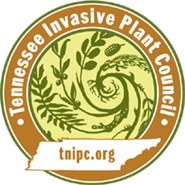Kummerowia striata (Thunb.) Schindl.
Kummerowia striata (Thunb.) Schindl.Japanese Clover
| Category |
|---|
| Forb/Herb |

Description
Height
Janapese Clover grows to 16 inches (40 cm).Stem
The pubescent, herbaceous stems are generally prostrate and may be sprawling or erect.Leaves
The oblong leaflets occur in triplets. A noticeable mid-vein runs down the center of each leaflet. A parallel arrangement of veins is attached at 90-degree angles to the mid-vein.Flowers
The 0.2-0.3 inch (5-8 mm) long, pink to purple or white single flowers appear in mid-to late-summer along the branching stems.Fruit
Fruit is a 0.2 inch long legume containing a single seed.Images
John D. Byrd, Mississippi State University, Bugwood.orgMore images of Kummerowia striata
Life History
Japanese Clover is an annual plant that reproduces by seed. The flowers are pollinated by insects and self pollinating. It prefers full sun. It is also known as the common lespedeza.Habitat
The plant prefers moist sandy, loamy, or clay soils with a pH range of 4.5-7.0. It can grow in semi-shade (light woodland) or no shade. It can be found on riverbanks, roadsides, waste ground, and utility right of ways.Origin and Distribution
Janapese Clover is in the Fabaceae (Bean) family and is native to Asia.Other States Where Invasive: AL, AR, CT, DC, DE, FL, GA, IA, IL, IN, KS, KY, LA, MD, MO, MS, NC, NJ, NM, NY, OH, OK, PA, SC, TN, TX, VA, WV
Sources
Haragan, P.D. 1991. Weeds of Kentucky and Adjacent States: A Field Guide. The University Press of Kentucky. Lexington, Kentucky.Southeast Exotic Pest Plant Council. 1996. Invasive exotic pest plants in Tennessee (October 1999). Research Committee of the Tennessee Exotic Pest Plant Council. Tennessee.
Southern Weed Science Society. 1998. Weeds of the United States and Canada. CD-ROM. Southern Weed Science Society. Champaign, Illinois.
Management Recommendations
Manually hand pull, mow, or cut.The use of post-emergent herbicides in early summer can be effective.
